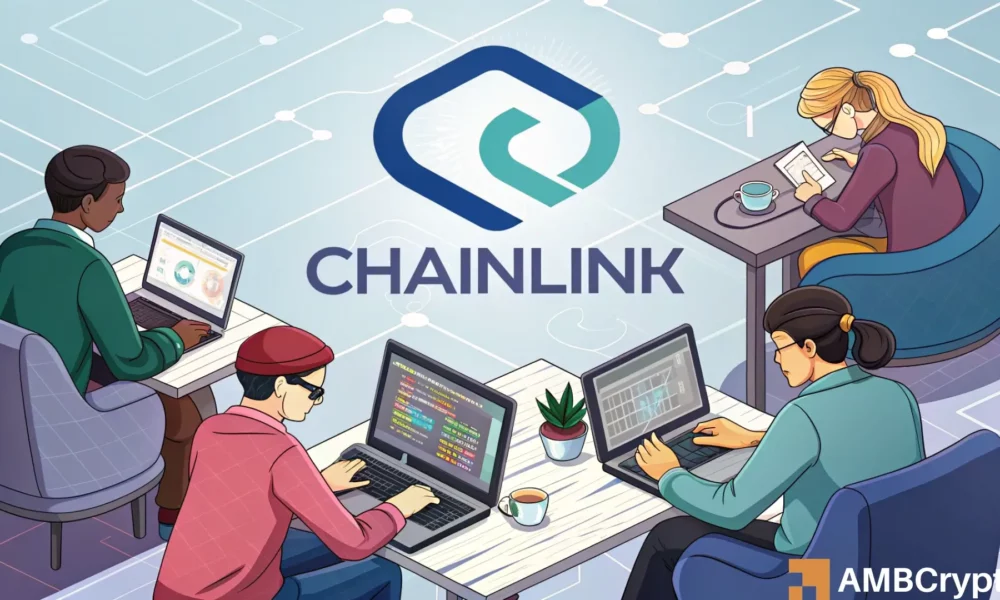Chainlink [LINK] has changed its daily market pattern to a bullish one following its climb above the $23.83 mark on January 17th. This bullish trend was supported by growing demand and a shift in momentum.
The price retested the 61.8% Fibonacci level and managed to hold above the key $20 level despite prevalent bearish sentiment in the market recently. There are indications that this recovery might transition into an uptrend pushing Chainlink above $31.
Analysis of Chainlink’s Daily Active Users Activity
During the holiday season, development activity for LINK experienced a significant drop, yet it remained respectable compared to other major altcoins. In the first week of January, there was a recovery in development activity, reaching levels similar to mid-December.
Meanwhile, the 180-day mean coin age was on an upward trend, suggesting accumulation. Daily active addresses reached a peak in December when prices almost hit $30. Subsequently, daily on-chain activity decreased but remained around levels seen in late November.
The strong signs of high activity and accumulation were bullish for investors, with the resurgence in development activity being a positive factor. The only slight drawback was the consistently negative sentiment seen over the past month.
Warning Signs from the NVT Ratio
Despite signs of accumulation among long-term holders, the Network Value to Transactions (NVT) Ratio has seen a notable increase. Typically, this suggests that the asset could be overvalued.
The NVT Ratio is calculated by dividing the on-chain volume by the token’s market capitalization, both denominated in USD.
An increasing NVT Ratio indicates a decrease in on-chain volume, stable volumes, and a rapid surge in market cap (and price).
In both scenarios, it implies that the price might be outpacing transaction volume, indicating potential overvaluation and a looming correction. The NVT Ratio has reached levels nearly as high as September 2024, just below the peak seen in January 2020. While not a definitive predictor of a significant price correction, it should be seen as a cautionary signal.

